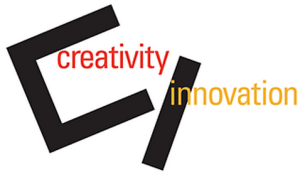Charles Darwin said: It is not the strongest of the species that survive, nor the most intelligent, but the ones most responsive to change. From Dan Pink’s Blog, we found the following facts on innovation that we would like to share with you:
Check out our thoughts on building innovation.

This is important: Learn How to Think What No One Else Thinks
A study of the top 50 game-changing innovations over a 100 year period showed that nearly 80% of those changes were sparked by someone whose primary expertise was outside the field in which the innovation breakthrough took place.
Wow! 80% created by someone outside the field where innovation occurred!
What other innovation facts and conclusions can we derive from this?
Innovation, while often depending on the new invention, is more about application than invention.

Often the application of something similar has already been performed in the other field, usually in a different way.
When working innovation, it helps to draw on various skills; experience sets …diverse crowds.
And finally

We need to be constantly open to new ideas, particularly in different fields of endeavor.
Probably the most persistent — and damaging — myth about innovation is that it’s about ideas. It’s not. Tremendous amounts of time and energy are wasted thinking up radically new ideas that never end up going anywhere. Middle managers never seem to tire of complaining that their ideas are ignored by the powers above.
The truth is that nobody cares about your ideas. They care about what problems you can solve for them. So if you want to innovate effectively, don’t go looking for a great idea so that you can dazzle others with your brilliance, look for a meaningful problem and get to work on solving it.
The secret to innovation and creativity is curiosity. You generate lots of ideas to find the best of the best. By creating ideas, you start by asking lots of questions. By being curious. By thinking widely and not discarding ideas too soon. By convergent thinking. All of which help us to understand better and define the problem we are attempting to solve.
Without the question “why?” there can be no here’s how to make it better. Or no game-changing innovations.
Customer Favorite Posts on Creativity Ideas You Shouldn’t Miss
So we want to share a story to illustrate the value of why you need to ask why.
We are always on the lookout for good stories. Stories to show points we are emphasizing. So we read a lot. Today’s story is about generating ideas. Ideas from convergent thinking.
The story is about why you should ask why. It comes from Ideas Champions. A consulting company like us (but bigger and more well-known), who specialize in creativity, innovation, team building, and leadership. All favorite topics of ours. So we keep up with this team.
The story is a big problem with one of our favorite monuments … the Jefferson Memorial in Washington DC.
Simply put, birds in huge numbers were pooping all over it, which made visiting the place a very unpleasant experience.
Attempts to remedy the situation caused even bigger problems since the harsh cleaning detergents being used were damaging the memorial.
Fortunately, some of the National Parks managers assigned to the case began asking WHY as in Why was the Jefferson Memorial so much more of a target for birds than any of the other memorials?
A little bit of investigation revealed the following:
The birds were attracted to the Jefferson Memorial because of the abundance of spiders, a gourmet treat for birds.
The spiders were attracted to the Memorial because of the abundance of midges (insects) that were nesting there.
And the midges were attracted to the Memorial because of the light.
Midges, it turns out like to procreate in places where the light is just so and because the lights were turned on, at the Jefferson Memorial, one hour before dark, it created the kind of mood lighting that midges went crazy for.
So there you have it: The midges were attracted to the light. The spiders were attracted to the midges. The birds were attracted to the spiders. And the National Parks workers, though not necessarily drawn to the bird poop, were attracted to getting paid, so they spent a lot of their time (and taxpayer money) cleaning the Memorial.
How did the situation resolve? Very simply.
After reviewing the curious chain of events that led up to the problem, the decision was made to wait until dark before turning the lights on at the Jefferson Memorial. About as simple a solution as you could get. Right?
That one-hour delay was enough to ruin the mood lighting for the midges, who then decided to have midge sex somewhere else.
No midges, no spiders. No spiders, no birds. No birds, no poop. No poop, no need to clean the Jefferson Memorial so often. Case closed.
Now, consider what solutions might have been forthcoming if those curious National Parks managers did not stop and ask WHY:
Hire more workers to clean the Memorial
Ask existing employees to work overtime
Experiment with different kinds of cleaning materials
Put bird poison all around the memorial
Hire hunters to shoot the birds
Encase the entire Jefferson Memorial in Plexiglas
Move the Memorial to another part of Washington
Close the site to the general public
Technically speaking, each of the above solutions was a possible approach, but at great cost, inconvenience, and with questionable results. Not great solutions.
Key takeaways
What problems are you facing that could be approached differently simply by asking WHY. And then WHY again, and then WHY again … until you get to the real definition of the problem?
If you don’t, you may just end up not correctly defining the problem. Not good. Nothing worse than solving the wrong problem. So put in enough time in understanding and describing your problem. Don’t leap to problem-solving before you do. Lots of whys help us explore and thoroughly identify the problem.

What conclusions does your business derive from these facts on innovation?
Remember … all new ideas begin in a non-conforming mind that questions some tenet of the conventional wisdom.
Need some help in improving the innovation process for you and your staff? Innovative ideas to help the differentiation with your toughest competitors? Or maybe ways to innovate new products and services?
Call today for a FREE consultation or a FREE quote. Learn about some options for innovation workshops to get noticeable results.
Call Mike at 607-725-8240.
All you get is what you bring to the fight. And that struggle gets better every day you learn and apply new innovative ideas.
When things are not what you want them to be, what’s most important is your next step. Call today.
Test. Learn. Improve. Repeat.
Do you have a lesson about making your innovation learning better you can share with this community? Have any questions or comments to add in the section below?
Digital Spark Marketing will stretch your thinking and your ability to adapt to change. We also provide some fun and inspiration along the way. Call us for a free quote today. You will be amazed at how reasonable we will be.
More reading on creativity and innovation from Digital Spark Marketing’s Library:
Generating Ideas by Convergent Thinking
Amazon and Managing Innovation … the Jeff Bezos Vision
The Secrets to Building an Innovative Culture
Mike Schoultz is a digital marketing and customer service expert. With 48 years of business experience, he consults on and writes about topics to help improve the performance of small business. Find him on G+, Facebook, Twitter, Digital Spark Marketing, and LinkedIn.
Photo Credit: opensource.com via Compfight
Facts on Innovation: 6 Amazing Ones You Need to Know

